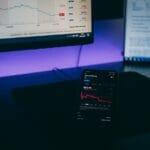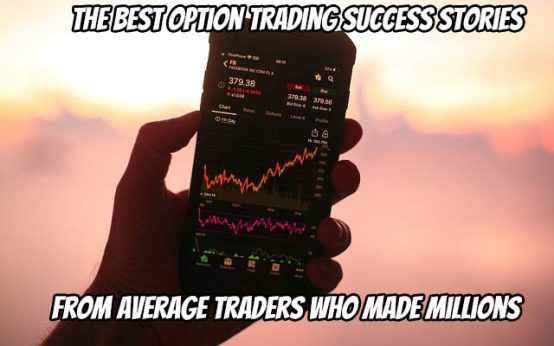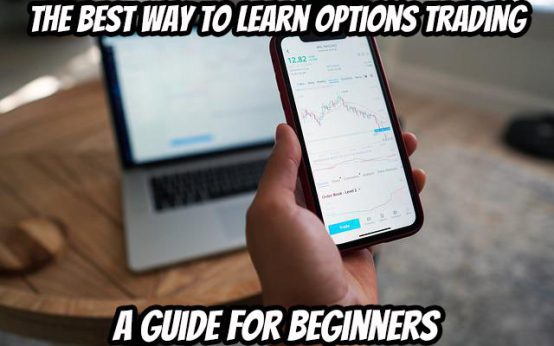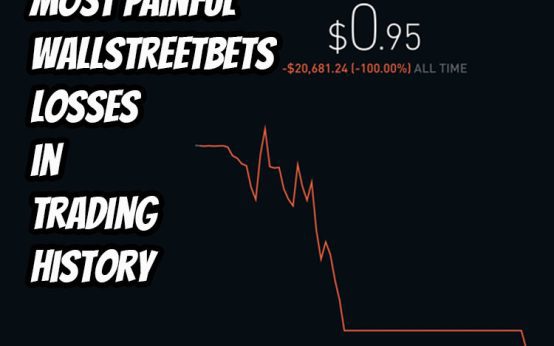How Much Money Do You Need for Options Trading? It’s a question that many aspiring options traders ask themselves before they dive right in. Options trading can be both exciting and profitable, but it does require an investment of time and capital to understand the basics well enough to trade profitably. Countless options traders have learned this lesson the hard way- many losing more money than they ever imagined trying to take advantage of opportunities that proved too difficult to manage.
Options trading is not for everyone. It requires dedication, patience and emotional discipline that many casual traders simply do not possess. For this reason, it is a good idea to find out how much money you can afford to risk losing before you start trading options.
The answer to How Much Money Do You Need for Options Trading? will be different depending on the type of option you intend to trade, as well as whether you are planning to buy or sell options. (Or do a combination of both.)
Opening an Account To Trade Options

Opening an options trading account requires more funds. 💰
Your broker must inform you how much funds are necessary in an account in order to allow for trading options.
Some accounts require as little as $1,000 in order to buy calls or puts, while in order to sell options the minimum required could reach $25,000.
Option Trading Fees
Fees associated with trading options differ between brokers, so it’s essential that you conduct thorough research into what will be charged by yours.
As previously discussed, your type of options trading will determine the minimum deposit your broker requires in an account in order to allow you to trade.
With that in mind, let’s examine a variety of options trading strategies. 🤑
Types of Options Trading Strategies
Buying calls or puts
This is the most basic type of options trading and the one that requires the least amount of money in an account before you can trade.
When you buy options, your maximum risk is limited to the amount you purchased the option for.
It is basically making a directional prediction on where a stock is headed.
Because they are simple to place and execute, it’s what The Empirical Collective focuses on.
This means that even beginners with really small account sizes can follow along their trades and enjoy the benefits of trading alongside a more experienced trading group.
And with their win average, there are many benefits to be had.

Selling Options
Unlike buying options, when you sell an option your loss is potentially unlimited.
This is why brokers require more money in a trading account before they will let you start trading options.
Advanced options trading strategies often use different combinations of both buying and selling options in order to maximize profit and or protect their investment.
With that in mind, let’s look at some of the most common options trading strategies.

Bull Call Spread
A bull call spread is the purchase of one call option, simultaneously with the writing (selling) or sale of another higher-strike call option.
Simply put, you purchase an OTM (out of money) call along with selling an ITM (in the money) Call at a staggered price. With this trade by setting both options to expire on the same date you either make money if there is volatility in your stock or not at all if it doesn’t move.
The benefit of this strategy is that it limits your downside risk considerably because you only lose what you paid for the options minus commissions and fees. On top of that, if done right, this technique can start making serious cash when volatility starts picking up.
Bear Put Spread
The bear put spread is the sale of a lower-priced put option while simultaneously buying or writing an equivalent number of puts at a higher price, netting out to no financial risk.
Often times, options traders use this type of trade when they think that there’s even less chance than usual for their stocks to go down in value. And because it’s not really costing them anything, sometimes investors will buy this type of trade when there are other reasons why they don’t want their stocks to go down in value–like during rumors about takeovers, for example.

Protective Collar
A Protective Collar is a strategy in the options market where an investor gets protection against downside price movements by selling an out of the money put option in addition to buying an offsetting call option. “Out of the money” in this situation means that at expiration, there would be no intrinsic value in the contract traded unless it’s exercised for some other reason. See also American Call, Put Option)
Long Straddle
A long straddle is a neutral strategy in which the trader buys an at-the-money call and puts option. It would be appropriate to open a Long Straddle position if you believe the underlying asset will experience a large movement during potential time expiry of options, but also may stay within its trading range.
Long Call Butterfly Spread
A Long Call Butterfly Spread is a low risk trade that has limited profit potential and large profit-loss range. Sell 1 lower strike call, buy 2 higher strike calls with the same expiration, sell 1 higher strike call. The goal of this trade is to make money on the time value decay of both high strikes prices
The maximum gain of this strategy is equal to 100% x ( 2 -1) or 200%.This can be computed as follows: for each point move in the underlying spot price above the long 121/129/133 butterfly wings, there are multiple points at which trader’s option will go into-the-money.
Iron Condor
An Iron Condor is a type of spread option strategy. An Iron Condor consists of two positions, both bullish. The goal is to make money on the stock up if it goes up and make money on the stock down if it goes down. It requires less capital than a Butterfly or Calendar Spread but does require some margin for disaster insurance in case one part of the trade blows up.
An Iron Condor in options trading is a two-legged spread with both long and short positions. One of the legs is typically sold for a credit, which is the difference between the purchase price and sale price in an equivalent stock transaction.
Iron Butterfly
An Iron Butterfly is a type of futures option strategy. It has limited risk, but the potential for unlimited profit.
As with any options position, you can go long or short on an Iron Butterfly.
The Iron Butterfly option strategy entails buying and selling two options with the same expiration date, but different strike prices.
Option trades cost money and you should always understand the implied risk of an position before entering it. This strategy is difficult to use for most traders because it requires a large initial investment, so it often does not make sense for someone who mostly wants to invest $1000 at a time or less.
Covered Calls
A covered call is a strategy that combines the purchase of an asset and the sale
of its related call option. A covered call position makes money if:
the stock appreciates in price, because it generates cash from the underlying-position’s capital gain and also profits from writing (selling) the call options at their set prices.
Married Puts
Married puts involve selling a put to collect profit.
A married put is a trade in which the investor sells (or “writes”) a put and simultaneously buys (or “owns”) another put, both on the same asset and with the same expiration date. A married put position has limited risk because it can be closed by buying back one of the options or exercising the other.
Each of these strategies will require varying amounts of money in a trading account before your broker will allow you to trade them.

how much money do you need for options trading
With that out of the way, here are other questions people asked when looking for answers to “how much money do you need for options trading?”
Can you lose money in options trading?
Yes. Options trading is essentially “buying the right to sell or buy at a certain price.” Like any other purchase, it carries financial risk in the form of possible lost money. It’s important not to invest money you can’t afford to lose when trading options, and all traders should undergo extensive training before they start investing in these volatile investments.
How do you avoid loss in options trading?
Losses in options trading can be avoided by doing extensive research on the strategy you plan to use.
There are two main ways to avoid losses in options trading, with both strategies benefiting from pre-planning. The first is finding an option with a known probability of expiring “in the money” using quantitative models. Essentially, this entails determining how likely it is for expiration to occur at what time before or after that date.
Is Options trading Better Than Stocks?
Yes. Options trading is better because of volatility.
Options traders are more interested in lower priced stocks than high priced stocks, while stock traders are more likely to be people who have the capital to buy higher priced stocks for growth purposes. Stock investors use less collateral when buying contracts on higher price-per-share stocks which can increase profit margins. For instance, if someone bought 10 shares of Microsoft at $83 per share (a total investment of $830), their profit margin would be 8%. However, if they bought 100 shares of Microsoft at $19 per share (a total investment of $1,900), their profit margin would be 19%– nearly double that of the previous investor!
Is options trading safer than stocks?
 Options trading isn’t any more or less safe than stock trading, because the same inherent risks are present in either type of market. However, options traders have several advantages.
Options trading isn’t any more or less safe than stock trading, because the same inherent risks are present in either type of market. However, options traders have several advantages.
For example, an option trader who wants to sell stocks short has the ability to buy back the shares at a time and price predetermined by her contract with her broker. The option-trading counterpart is that an investor who wishes to purchase stocks could write calls on those very same shares even though she doesn’t currently own them; she just has the obligation to sell them if they’re assigned which alleviates risk up front for both parties involved in this strategy.
Do day traders use options?
There is no single set of strategies used by day traders, though most strategies involve making decisions about which stocks to buy or sell within a relatively short period. Day trading is analogous to the act of scalping, an activity done for instance among soybean seeds using automated trading equipment rapidly bought and sold as prices change. In other words, the aim is often at closing out their trades at a higher price than purchase before news can whipsaw the market against them.
If you’re interested in day trading, you should start by reading “The Day Trading Manifesto” here.

Are options trading worth it?
Yes! Options trading is one of the only ways to profit in a bear market and protect against downside risk. A stock can rise 20% in a bull market, but it can also fall 20%. One way to limit your downside is by buying put options with deep out-of-the-money strikes, but if you’re wrong it could be time to exercise that option and can mean big losses. Selling covered calls (selling shares of stock that you own) is another way to capture profits when it’s up and lower risk on the downside if your predicted direction doesn’t work out as expected.
Can I day trade options without 25k?
No, you will not be allowed to day trade options if you have less than $25,000 in a trading account.
Options are a type of derivative financial instrument that has many uses in modern finance, and their use for speculation on the prices of stocks is one of the most important ones. On the final day before expiration, if an American-style option with a strike price of at least 25% below the stock’s price retains any value whatsoever (i.e., cannot be sold for less than its time value), then it can be exercised by exercising one contract.
How are day traders taxed?
Day traders are taxed at capital gains rates.
Capital gains tax is the tax imposed on the profits realized from the sale of a capital asset—a property, investment, or business interest that was held for more than one year. Generally, an asset’s holding period determines whether any realized appreciation will be treated as long-term capital gain eligible for lower rates or short-term capital gain eligible for higher rates. The holding period starts on the day after it is acquired. This distinction has major implications because long-term capital gains are due to low tax rates while short-term are usually taxed at higher levels unless there are explicit exclusions available.
What does the IRS consider a day trader?
A day trader is someone who buys and sells stocks, futures, commodities or other financial instruments within the same trading day. Day trading versus longer-term investment accounts for many of the quick asset fluctuations in today’s markets. A person usually bases a stock transaction on news-based reasoning about how an event will affect a company’s performance. Day traders use small margins and long term positions to maximize return on investments over a period of days.
Can you buy and sell the same stock repeatedly?
Yes. There is nothing illegal about buying and selling the same stock over and over, so if you want to invest in a bank, I recommend investing your first paycheck with them—although it can be risky!
Is day trading really profitable?
Day trading can be profitable if you know what you’re doing and the market is in your favor.

 How to Paper Trade Options – Plus The 5 Best Free and Paid Trading Platforms
How to Paper Trade Options – Plus The 5 Best Free and Paid Trading Platforms  The Options Trading Mentor: Here’s How to Find the Best One for You
The Options Trading Mentor: Here’s How to Find the Best One for You  The Best Option Trading Success Stories from Average Traders Who Made Millions
The Best Option Trading Success Stories from Average Traders Who Made Millions  The Best Way to Learn Options Trading: A Guide for Beginners
The Best Way to Learn Options Trading: A Guide for Beginners  Here’s The Top WallStreetBets Sentiment Tool on The Market
Here’s The Top WallStreetBets Sentiment Tool on The Market  The Biggest and Most Painful WallStreetBets Losses in Trading History
The Biggest and Most Painful WallStreetBets Losses in Trading History